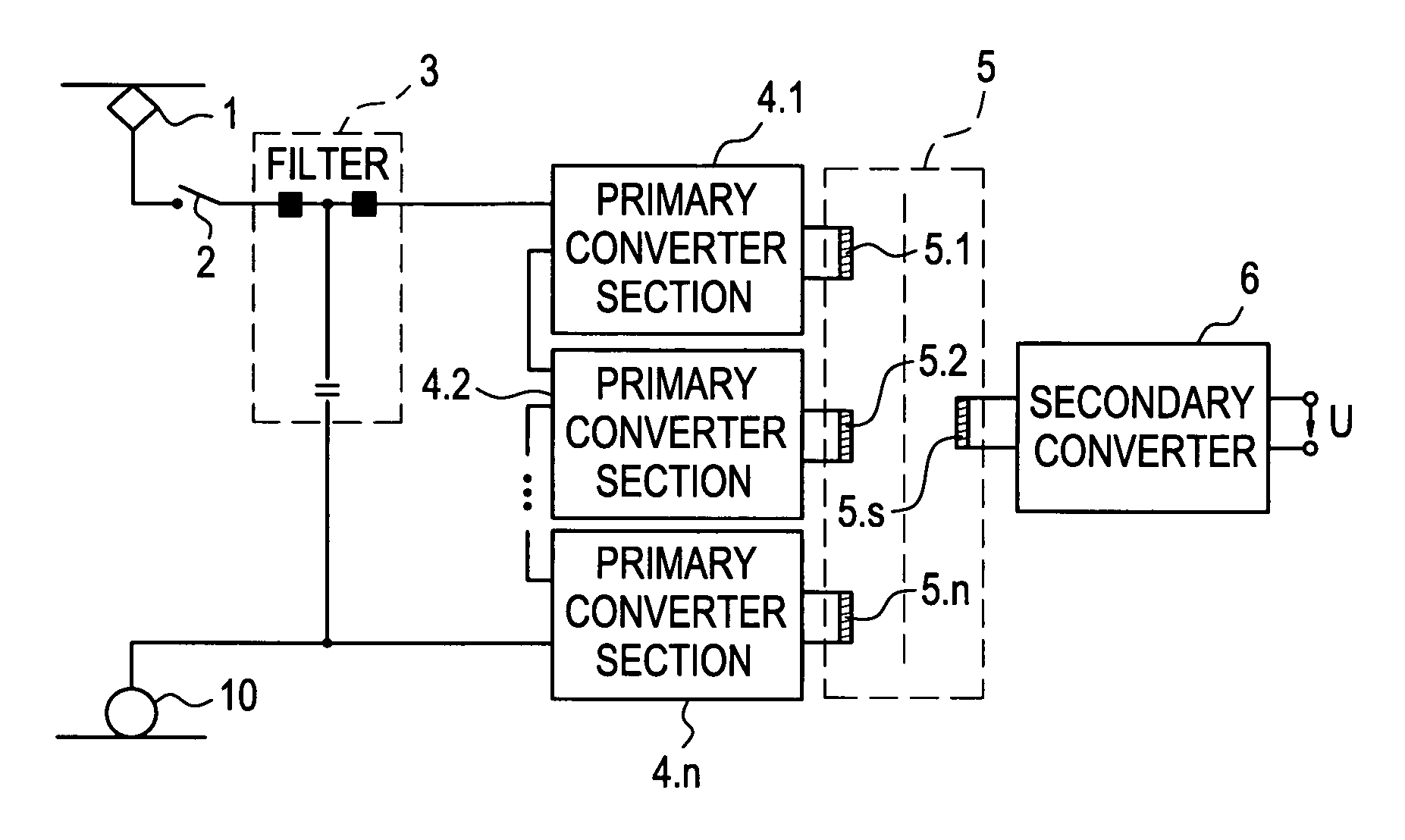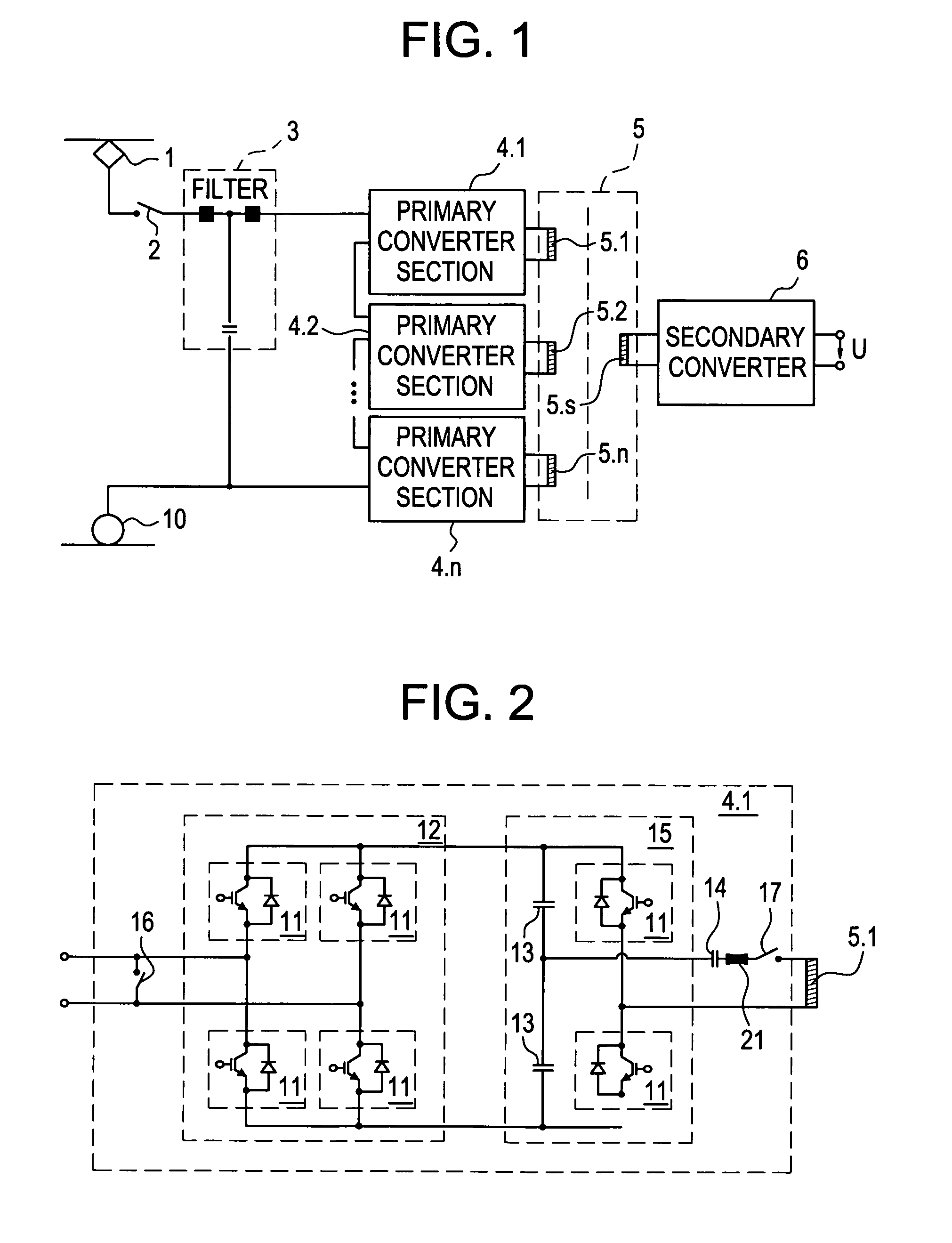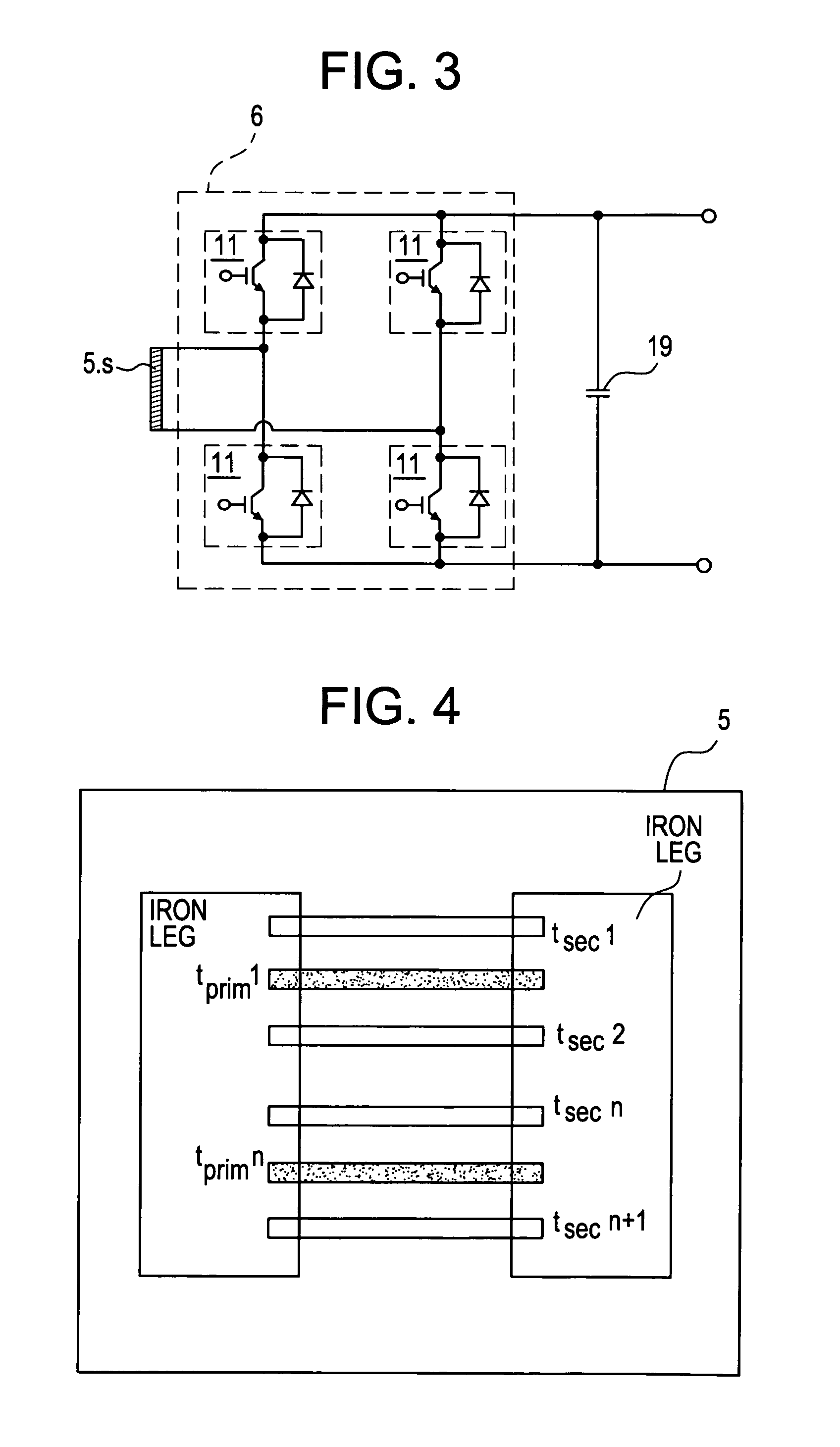Medium frequency energy supply for rail vehicles
a technology of medium frequency energy supply and rail vehicles, applied in the field of electronic circuits, can solve the problems of reducing the useful space available, disadvantageous transformers, and loss of energy
- Summary
- Abstract
- Description
- Claims
- Application Information
AI Technical Summary
Benefits of technology
Problems solved by technology
Method used
Image
Examples
Embodiment Construction
[0024]In a preferred embodiment (FIGS. 1 & 2), the circuit according to the present invention is provided with several primary converter sections 4.1–4.n that are operated directly, by way of a switch 2 and a filter 3, between an overhead line 1 and a vehicle wheel 10 grounded through a rail. The primary converter sections 4.1–4.n are allocated to the respective one of a transformer primary winding 5.1–5.n of a transformer 5 and include one mains four-quadrant regulator 12 in the form of a full bridge with four circuit elements 11 each, each circuit element having one transistor and one free-wheeling diode, and of one half bridge 15 with two circuit elements 11 each, each circuit element having one transistor and one free-wheeling diode and capacitors 13; the half-bridge may be replaced by a full bridge, if so desired. The transformer 5 has a secondary winding that feeds a directly-current voltage intermediate circuit through a secondary converter 6 (FIG. 3).
[0025]In accordance with...
PUM
 Login to View More
Login to View More Abstract
Description
Claims
Application Information
 Login to View More
Login to View More - R&D
- Intellectual Property
- Life Sciences
- Materials
- Tech Scout
- Unparalleled Data Quality
- Higher Quality Content
- 60% Fewer Hallucinations
Browse by: Latest US Patents, China's latest patents, Technical Efficacy Thesaurus, Application Domain, Technology Topic, Popular Technical Reports.
© 2025 PatSnap. All rights reserved.Legal|Privacy policy|Modern Slavery Act Transparency Statement|Sitemap|About US| Contact US: help@patsnap.com



